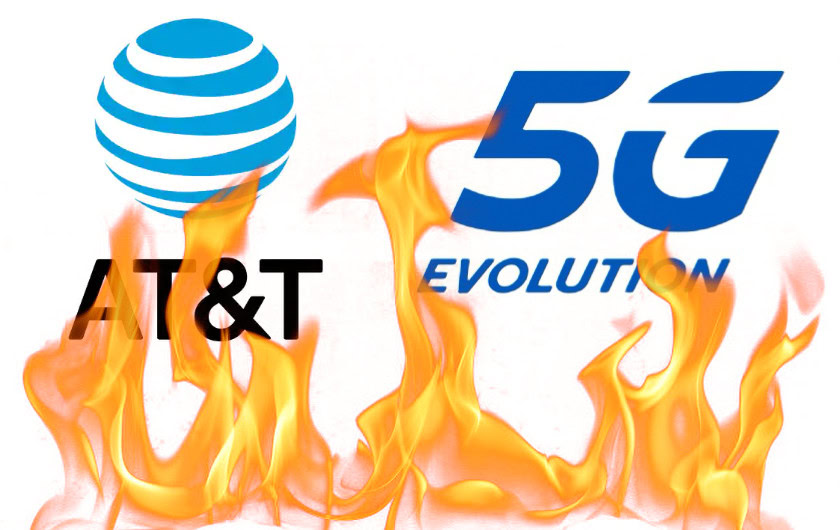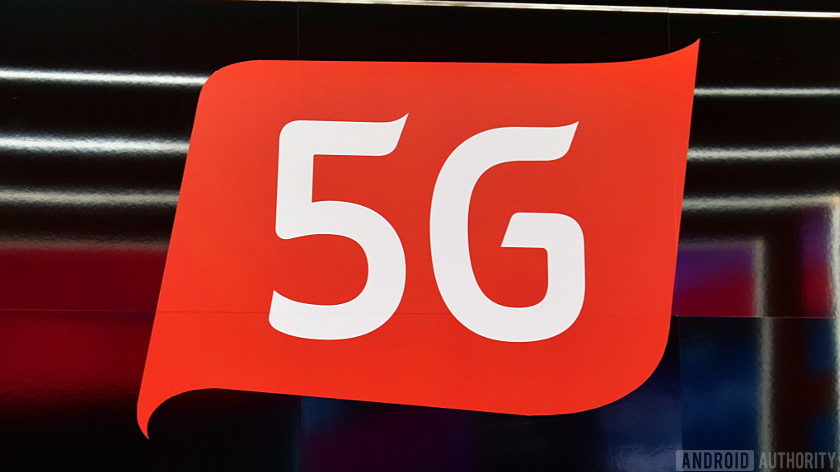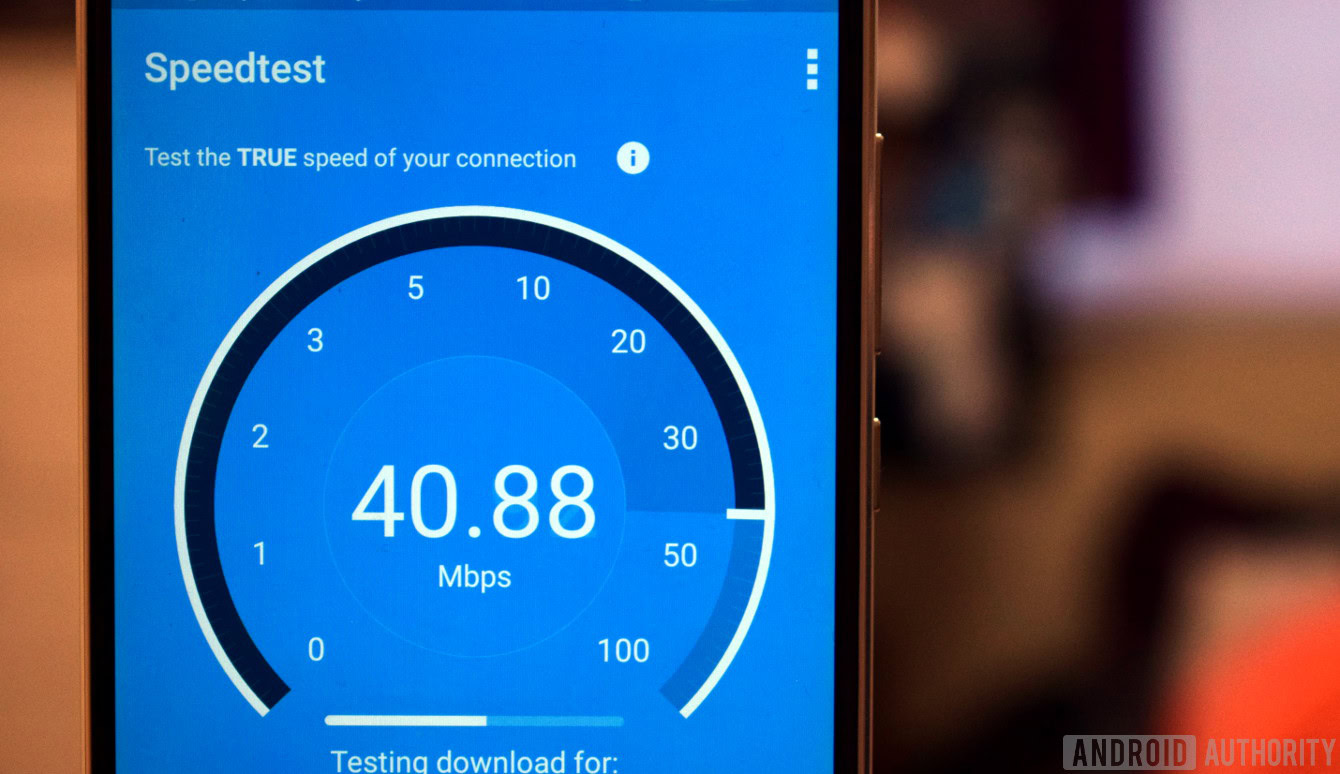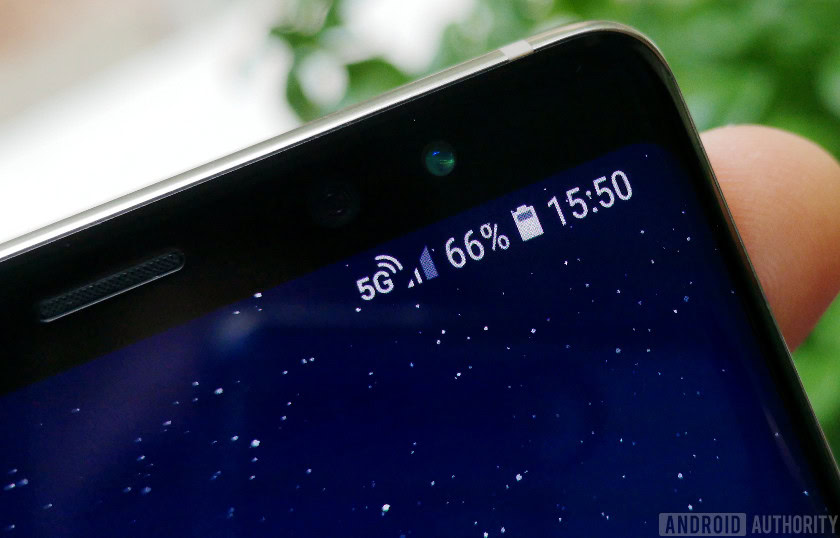Affiliate links on Android Authority may earn us a commission. Learn more.
Why I hope AT&T loses the 5G E lawsuit

AT&T has, quite rightly, drawn flack from U.S. wireless industry rivals and pundits alike for its 5G Evolution (5G E) service and the appearance of a new networking icon on a number of existing smartphones. As we’ve already covered, there’s nothing 5G about AT&T’s 5G E service.
To show its dissatisfaction with AT&T’s lack of fair play, rival carrier Sprint has taken AT&T to court for false advertising. The lawsuit is filed in the U.S. District Court of New York.
I for one hope the case shows the full implications of AT&T’s deceptive marketing strategy and that it loses to Sprint. There are several reasons worth diving into, but the underlying point is that a single carrier should not be able to co-opt and undermine the core message of 5G to score a competitive advantage.
AT&T’s excuse is nonsense
First things first, AT&T’s defense for using the Evolution moniker is at best a misdirection and more likely deception. The company declared 5G E is meant to signal to AT&T customers that the carrier is offering mobile data speeds faster than standard LTE. “That’s what 5G Evolution is, and we are delighted to deliver it to our customers,” said AT&T.

Are we to infer the company doesn’t understand LTE (Long-Term Evolution) and has never heard of LTE Advanced and Advanced Pro, the technical specifications 5G E is based on?
LTE Advanced Pro was specifically designed as the bridge between what started out as 4G LTE and will eventually become 5G. Importantly, LTE-A Pro introduces LTE-Unlicensed with LAA and Multefire, supports device-to-device and narrow-band IoT communication, full dimension MIMO with up to 32 aggregated carriers, wider bandwidth up to 640MHz, and 3Gbps speeds with just 2ms latency.
AT&T's 5G E barely enhances LTE-A, falls well short of full LTE-A Pro, and is nothing close to resembling 5G.
LTE-A Pro is clearly superior to the 3x carrier aggregation, 256QAM, 4×4 MIMO, 1Gbps speeds, and optional LAA support AT&T says 5G E has. In fact, those first three specifications just about constitute an LTE-Advanced network. This earlier standard, finalized in 2011, introduced 5x CA, 256QAM, and 4X4 MIMO support. LAA is the only LTE-A Pro technology AT&T is using, and it’s optional as part of 5G E.
If AT&T wants to indicate when more advanced networking technology is available to consumers, it should have adopted an LTE-A Pro logo rather than inventing 5G E. Carriers across the world adopted a similar strategy with the arrival of LTE-A, calling it 4G+. AT&T could have used a 4G Pro icon, or even 4G++, without upsetting anyone.

5G E undermines 5G confidence
If the technical jargon didn’t stick, don’t worry — you’re not alone. In fact, that’s another very good argument against exactly what AT&T is doing. 4G LTE and 5G are designed to be distinctly separate.
LTE now extends across six 3GPP specifications — Release 8 through 14 — with carrier networks cherry-picking what they want to implement. It’s tough for consumers to know the difference between any two networks. 5G (Release 15) resets the counter, ensuring a new core set of technologies going forward. This is hugely important so industry and consumer alike can easily define and understand what the generational leap brings.
AT&T is tearing up the good work done by major industry bodies to standardize a complex maze of networking technologies. AT&T is a member of the GSMA, CTIA, and ATIS, all major contributors to the 3GPP’s specifications, as well as a sector member of the ITU. Now the company is effectively seeking special status to define its own terms and technologies when the globally agreed definitions don’t suit its marketing goals. At the same time, it had the gall to use these same standards to criticize Verizon’s proprietary 5G developments.
AT&T is critical of Verizon positioning its proprietary 5G TF standard as 5G, but doesn't see a problem with its own marketing.
We’ve been here before. Both 3G HSPA+ and WiMax technologies posed as 4G. Both offered inferior experiences, though it wasn’t helped by confusing ITU guidelines. T-Mobile was the biggest offender with HSPA+, but AT&T dipped its toes into the controversy by upgrading iPhone 4S phones to display a 4G icon when they were only HSPA+ compliant.
The problems here are obvious. Consumers expect a product to do what it says. HSPA+ wasn’t as fast as the global definition and understanding of 4G. Consumers were frustrated and deceived when those products underperformed. The same will be true of 5G E, which will be far less capable than true 5G networks in the U.S. and around the globe.
AT&T might not be directly lying about what 5G E is, but the 5G part is almost certain to mislead consumers looking for their first 5G phones. Their inferior experiences on AT&T’s network could well go on to undermine their confidence in proper 5G networks and devices arriving in due course.

5G E could damage true 5G
Mobile companies are banking on 5G rejuvenating sales and giving the slowing industry a much needed shot in the arm. Qualcomm happily boasts about helping accelerate 5G deployment, even though the specification has now split into 5G Non-Standalone and Standalone segments.
Why should consumers upgrade to an expensive new 5G smartphone when their current smartphone supports 5G E? We already know owners are keeping their smartphones for longer, and 5G might be one of the few reasons for some to upgrade next year.
High-street consumers will expect 5G E to rival 5G networks from AT&T's competitors. It won't.
This is likely the crux of Sprint’s objection to the 5G E marketing ploy. AT&T is attempting to get in the door ahead of true 5G phones in later 2019, locking consumers into multi-year contracts with existing handsets. By the time these contracts end, the carrier will have launched true 5G or perhaps upgraded its 5G+ tech (another dubious term) to work with smartphones, which it can upsell to consumers. During that time, 5G early adopters could have had superior experiences on a true 5G network instead of being stuck in a deceptive plan.
The knock-on effect for rival U.S. carriers and consumers could be painful. Failure to bring in early adopter revenue via more expensive 5G plans could reduce carrier investment in 5G deployment. 5G adoption could slow down nationwide, confining the technology to its starting cities for longer. Wider adoption is essential for lowering prices and encouraging regional competition. It boosts investment in cheaper modem, SoC, and radio components, which in turn lets more phone manufacturers offer competitive products.
AT&T is attempting to steal ground
AT&T is undoubtedly looking to steal the thunder of its 5G rivals. For example, Verizon already has its proprietary fixed 5G up and running in four cities as it prepares for 5G mobile later this year. AT&T flip-flopped and delayed its 5G fixed wireless, opting for an LTE-based alternative in the short term.
Meanwhile, T-Mobile is winning the numbers war. The Uncarrier has 30 5G cities already switched on, though the carrier still needs to flesh out coverage in preparation for the first 5G phones. AT&T has 12 trial cities so far, and this only includes fixed wireless for a small number of “early adopters.” There are plans to service 19 cities by the end of 2019, but “nationwide” expansion won’t start until 2020.
5G E is nothing more than a cynical ploy by AT&T to appear more competitive. In reality, it’s no further ahead than its rivals on the road to 5G. The company arguably has the least ambitious plans for 2019.
The industry has clearly seen through the ruse, but whether less-informed consumers will is something for the U.S District Court of New York to decide. Sprint claims 5G E is false advertising, and I hope the court agrees — it would help save consumers from this mess.